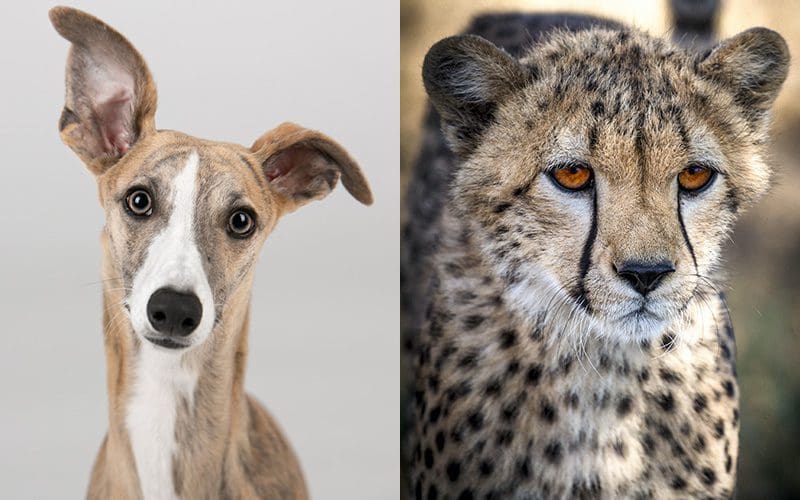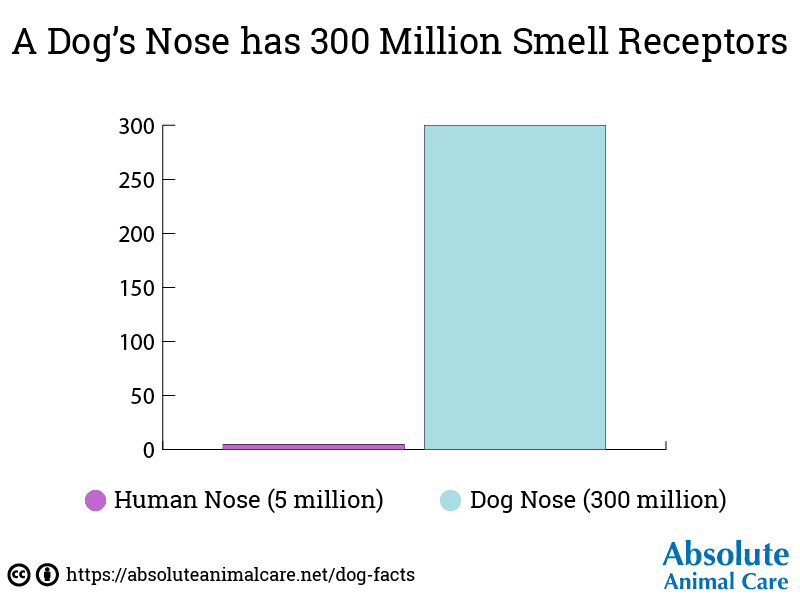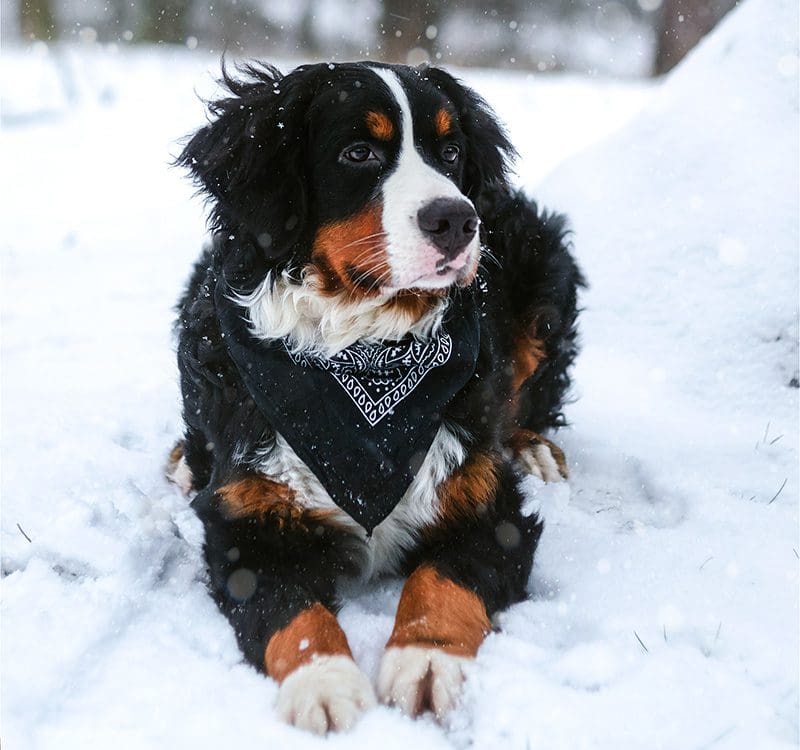
Our goal was to put together the GRRREATEST List of Dog Facts just for you!
This project was fun for us because dogs are absolutely amazing animals and we love talking about them!
This list is HUGE, so we’ve broken it down into easy sections.
You can use the jump links to go straight to the dog facts that you’re looking for.
Or, read through the entire list start to finish for maximum dog facts enlightenment!
In this Article We Cover:
- The Top 10 Most Amazing Dog Facts!
- The Best Dog Facts for Kids
- Fabulously Fun Facts About Dogs
- Furry Facts About Dogs: (What’s in a Dog’s Coat?)
- The Best Dog Trivia: (Stump Your Friends!)
- Weird Dog Facts: (WOOF Whaaat??)
- Crazy Cute Dog Facts: (Awww!)
- Bernese Mountain Dog Facts: (Big Fuzzy)
- Dog and Human Relationship Facts: (Best Friends)
- Facts About Service Dogs: (A Helping Paw)
The Top 10 Most Amazing Dog Facts!
1. If a Greyhound Challenged a CHEETAH to a Race, the Greyhound would WIN!

A Greyhound can run about 35 mph for up to SEVEN MILES. A Cheetah is much faster over a short distance (70 mph) but can’t keep that speed up for much longer than 30 seconds.
So, in a race, a Cheetah would reach the half mile marker while the Greyhound was only at a quarter mile. Slowly but surely, the Greyhound would gain ground and overtake the Cheetah.
It’s a classic case of the Tortoise and the Hare!
2. A Dog’s Nose is a HEAT SEEKING Missile!
You probably already know that dogs have an amazing sense of smell, but that’s not all.
Dog’s can use their nose as a heat sensor as well.
So, even if a dog cannot see its prey, it can sense the prey’s heat signature and locate it.
3. Dogs DREAM just like humans do!
We know that dogs love to sleep, and just like us, they experience the deep stage of sleep called REM (Rapid Eye Movement).
This also means that dogs can have nightmares too! So, remember to approach a sleeping dog with care!
4. Every dog has a UNIQUE nose print. Just like a human fingerprint.
This might mean that if dogs were detectives, they would dust for nose prints!
We imagine that a dog detective would probably be very busy tracking down “missing dog treats”.
5. A Human Would Need SIXTY NOSES to Equal the Smell Receptors in ONE DOG NOSE.

A human nose has approximately 5 million smell receptors.
A dog nose has about 300 million smell receptors which is SIXTY TIMES MORE!
Sixty noses is a LOT of noses.
6. The Oldest Known Dog Lived to be 29 Years Old.
“Bluey” was an Australian Cattle Dog who lived to be about 29 and a half years old.
Bluey was born in 1910 and he lived in Victoria, Australia.
7. Dogs are as SMART as a Human Two Year Old and can Learn up to 1000 Words!
Some dogs are even able to discern between nouns and verbs. There is active research into the cognitive abilities of dogs at Universities around the world.
8. Dogs and Humans have been Living Together for 30,000 Years!
Fossils of domestic dogs were found dating back to over 30,000 years ago. So, it is believed that humans and dogs have been friends for a very LONG time.
That’s a lot of dog adventures over the years!
9. Dalmatian Puppies are Born WITHOUT Spots!
Baby Whitetail Deer are born with spots and then they fade over time.
Dalmatian puppies do just the opposite! They are born totally white and their spots develop as they age.
10. Dogs Sleep MORE than Humans but LESS than Cats.

There are only 24 hours in a day and animals spend a fair chunk of that time sleeping.
On average, an adult dog sleeps about 11 hours a day. Humans need about 7.5 hours of sleep a day.
And for Cats? Well, let’s just say that cats feel rest is very important. Cats sleep about 15 hours a day!
The Best Dog Facts for Kids

1. Dogs Cannot SWEAT Like Humans Do.
A Dog has sweat glands in his paws and nose, but has to use panting as the main way to cool himself.
Can you imagine if humans had to PANT to cool themselves down?
2. Chocolate Can Make a Dog Very Sick.
There is a compound in chocolate called theobromine that dogs cannot digest. If a dog eats too much chocolate, he can get sick and even die.
Dogs don’t know this however, so it is very important to keep your dog away from any chocolate!
Take extra caution around holidays like Halloween or Christmas when there might be bags of chocolate candy around.
3. If you YAWN Around Your Dog, He Might YAWN Too!
Research shows that the sound of a human yawn can make a dog yawn as well.
Humans and dogs have been hanging out together for a LONG time, so this makes a lot of sense.
This also means that if your dog yawns, that might make you yawn too!
4. Dogs use their WHISKERS to make important decisions.
It may look like a dog’s whiskers are just for decoration, but they actually use them to feel things around them.
Dogs will sometimes use their whiskers to test if they can fit into a small space. If they guess wrong, they can get stuck or injured.
This is why it is so important to avoid cutting a dog’s whiskers whenever possible. They need them every day!
Fabulously Fun Facts About Dogs

1. Two Golden Retrievers Became MAYOR of Idyllwild, California.
Mayor Max and Mayor Max II were two Golden Retrievers who held the post of Mayor in Idyllwild, California.
Mayor Max held the post for one year and then Mayor Max II took over.
It was mostly a ceremonial post which was fine by the Maxes. They weren’t much for the legislative process anyway!
2. The Dachshund Was Originally Bred to Battle Badgers.
Yes, the mighty Wiener Dog was originally meant to hunt Badgers.
Probably not Honey Badgers though. Even Weiner Dogs know that no one should EVER fight with a Honey Badger.
3. Dogs Are Very Particular About Pooping.
What is the reason that dogs are so particular when it comes to finding a place to poop?
Well, it is currently believed that all that fuss is related to the Earth’s Magnetic Field.
For some reason, our dog friends prefer to be in alignment with the Earth’s magnetic field when they do their business.
And that takes some time for your dog to figure out, especially when it’s early in the morning and very cold and you would love to go back inside.
Furry Facts About Dogs: (What’s in a Dog’s Coat?)

1. A Dog’s Coat Matches the Work He was Meant to Do.
The fancy “continental clip” used on Poodles was originally designed to keep their joints and internal organs warm while they retrieve game from the water for hunters.
Terriers Coats are meant to be “hand stripped” (a hand pulling of the guard hairs of the coat) so that the coat hardens like a suit of armor. This is meant to protect the Terrier when he goes underground in pursuit of prey.
Even the eyebrows of the Terriers have a purpose. They are meant to protect the dog’s eyes from dirt as it hunts in burrows.
2. Dogs have THREE different HAIR TYPES.
The guard hair is a protective hair type in the outer coat. These are shiny and have the brightest colors.
The guard hair is connected to the arrector pili muscle which allows the dog to lift or close their coat when they are too hot or too cold.
Secondary hair is what makes up the under coat. This hair is porous, soft, and downy. The secondary hair provides insulation and protects the dog’s delicate skin.
The vibrissae (or whiskers) are thick, sensory hairs located strategically on the dog’s body. These are connected to nerve endings and allow the dog to feel their environment as well as changes in pressure.
3. A Dog’s Skin is Directly Linked to His Immune System
The guard coat is important for the protection of a dog’s skin because the protective, nourishing, and hydrating sebum (protective oil produced by the skin) is secreted from pores in the hair follicles.
The sebum rides along the guard hairs to get to the surface of the skin where it is then spread over the skin by the movement of the dog’s coat.
The guard coat also provides additional protection from sunlight, abrasions, and irritants. This is why hairless breeds tend to secrete extra sebum (protective oil) to make up for the missing protection of the guard coat.
4. Interested in more information on your dog’s coat?
If you’d like to learn more, we have an article all about dog coats, brushes, combs, and brushing tips!

We are often asked what the best dog brush is. In this article, we discuss our recommendations for the best dog brushes and brushing techniques for your particular dog.
The Best Dog Trivia: (Stump Your Friends!)

1. Where Did the Australian Shepherd Originate From?
This trivia question seems a little suspicious but you still kind of want to answer “Australia!” anyway.
Australia is not correct though.
The Australian Shepherd is an American dog breed. It was developed in California in the 19th century.
2. Do All Dogs Bark?
Almost, but not all! There is one breed of dog called the Basenji that does not bark.
The Basenji isn’t silent however, it does howl and make sounds that resemble a human shriek.
The reason this dog lost its bark is because it has an oddly shaped larynx.
3. What is the Largest Dog Breed?
This one is tricky because in terms of mass, the largest dog is actually the English Mastiff.
The Saint Bernard is a close second and there are dogs like the Irish Wolfhound and the Great Dane that can be up to six inches taller.
Pound for pound though, the winner is the English Mastiff.
Weird Dog Facts: (WOOF Whaaat??)

1. The Beatles Song “A Day in the Life” has a Hidden Part Just for Dogs.
There is a high pitched whistle that only dogs can hear at the end of the Beatles Song “A Day in the Life”.
Paul McCartney included it for his dog.
2. Some Dogs Have Black Tongues!
There are two dog breeds who have all black tongues: Shar-Peis and Chow Chows.
3. Puppies Cannot Hear or See When They Are Born.
When puppies are born, they are still developing and so they are both deaf and blind.
It can take up to two weeks for them to open their eyes and begin to respond to sounds.
Crazy Cute Dog Facts: (Awww!)

1. Dogs Do Not Hate Cats!
The trouble is that dogs are naturally prone to hunt small animals as prey and cats fit that description.
However, dogs and cats CAN get along very well, especially if they are part of the same family unit and their owners spend time helping them bond.
Some dogs and cats are even known to snuggle up and nap together!
2. Most Dogs Get Presents on Holidays.
Nearly 80 percent of dog owners will get their dogs presents around the holidays or on birthdays.
Some dogs even get a party dedicated just to them!
3. Your Dog May Have Fallen in Love with You!
Oxytocin is found in humans and dogs and is considered a “love hormone”.
A research study found that the level of oxytocin increases in dogs and their owners when they look into each other’s eyes. Aww!
Science is late to the party on this one. Everyone already knew that!
Bernese Mountain Dog Facts: (Big Fuzzy)

1. Bernese Mountain Dogs were Once Called “Cheese Dogs”.
Originally, the Bernese Mountain Dogs were bred to be farm dogs used for guarding property and herding cows.
Due to their large size, they were also used to pull carts of milk and cheese to market and this earned them the nickname “Cheese Dogs”.
In the modern day, they have a new nickname. Enthusiasts like to call Bernese Mountain Dogs “Berners”.
2. Bernese Mountain Dogs Have a Short Life Span.
Larger dogs typically have a shorter life span, but the Bernese Mountain Dog is one of the shortest at 8 to 9 years.
3. Bernese Mountain Dogs Thrive in Cold Weather.
With their thick coats and cold climate roots, these dogs love to get outside with you on a cold day.
They’re very affectionate and love spending time with their family.
Dog and Human Relationship Facts: (Best Friends)

1. Dogs were the First Domesticated Animal
Early humans and wolves began working together approximately 30,000 years ago.
All of the dog breeds we have today are descendants from those first friendly wolves.
However, dogs are not actually descended from modern day wolves. Dogs and modern day wolves share a common ancestor that is now extinct.
Despite popular belief, dogs do not share the same pack structure as wolves.
Wolf packs consist of a mated pair and their pups. Dogs have not shown themselves to be monogamous.
Additionally, unlike male wolves, male feral dogs do not care for their pups.
2. Dogs Do Not Understand the Concept of “Alpha”.
The concept of an Alpha Wolf has been disproved by our increased understanding of wolf social behaviors.
And since the wolves do not actually have an “Alpha”, it follows that dogs do not either.
3. A Dog Can Tell Every Family Member Apart by Smell.
Dogs have an amazing sense of smell and they use it in all kinds of interesting ways.
One of those is the ability of a dog to identify each of his human family members by smell.
Your scent is your name tag as far as your dog is concerned!
4. A Dog Can Be Good for Your Health.
Petting your dog has been shown to reduce stress and blood pressure for both you and your dog.
Dogs also help combat loneliness which can be a source of health problems in humans.
You and your dog are definitely a team!
5. Is your dog HYPER?
We have an article that discusses how to calm a hyper dog down. It also provides more information on various dog behaviors.

As a professional dog groomer, I am often asked how to calm a dog down. Here are the best products and tips I’ve found over the years.
Facts About Service Dogs: (A Helping Paw)

1. For over 100 Years, Therapy Dogs have been Helping People.
Dogs can be very good for your health but they can also help you to heal when you get sick.
The practice of using therapy dogs expanded in the 1960’s when they started to be introduced into school, medical, and nursing home settings.
2. In 1929, the First Training School for Service Dogs Started in the USA.
Dogs had been used in a service setting for a long time before the training school opened.
However, the opening of the school began efforts to standardize the training of service dogs.
3. German Shepherds Were the First Police Dogs.
German Shepherds have been used to detect bombs all the way back to World War I.
These dogs are a huge help to police officers every day.
Conclusion
That brings us to the end of our HUGE list of dog facts!
We hope you enjoyed this dog facts article as much as we did.
Dogs are truly a human’s best friend! (Just ask yours. They’ll tell you.)
Ready for More Dog Articles?
Please check out our Dog Blog for a full listing of all of our dog articles!
Join Our Mailing List!
We hope you enjoyed reading this article! The Absolute Animal Care Blog features articles that contain our best recommendations for dog and cat wellness, training strategies, and products.
Please join our mailing list to receive updates when new articles are released!
Bar Graphs: All bar graphs were created by Absolute Animal Care. If you’d like to use them, please link to this article to credit. Thank you!
Me-Wow Cat Photo by Absolute Animal Care
Greyhound Photo by S J
Cheetah Photo by joey Zhou
Dog with Child Photo by Alicia Jones
Dog with Candle Hat Photo by Laula Co
Fuzzy Brown Dog in Snow Photo by Omid Armin
Funny Glasses Dog by Braydon Anderson
Surprised Dog in Banana Shirt by Karsten Winegeart
Dog in Pink Party Hat by Terrance Raper
Bernese Mountain Dog Photo by Anastasiia Tarasova
Dog Pulling Rope Photo by Agape Trn
Service Dog Photo by Jeremy Bezanger
